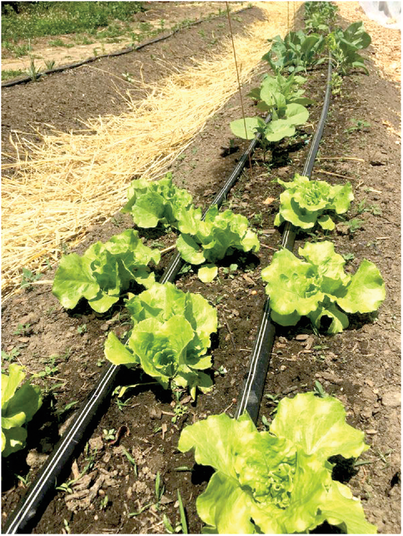Contaminant Uptake Varies with Crop and Management Choices in Urban Gardens

Urban farms and gardens provide access to fresh produce, skills, and knowledge that is crucial to a more just and sustainable food system. However, legacy soil contamination and costly remediation work often impede how much food can be grown in cities. There are some general guidelines around what levels of lead, arsenic, and other soil contaminants are tolerable. But growers still lack confidence about how different crops interact with soil properties and soil organisms, such as mycorrhizal fungi, and how that influences contaminant levels in harvested crops.
Scientists from Connecticut College grew mycorrhizal and non‐mycorrhizal root, leafy, and fruiting crops in an urban farm with two levels of arsenic and lead soil contamination. They found that crop lead uptake was greater when soil pH and soil phosphorus were lower. They also found that some mycorrhizal fungal structures increased lead uptake while other structures decreased arsenic uptake.
These findings may help urban growers make informed decisions about soil management and crop choices when growing in soils moderately contaminated with lead and arsenic, allowing for greater confidence in urban food production.
Adapted from Bowdish, L., Duran, A., Richardson, J., & Vukicevich, E. (2023). Mycorrhizal fungi and soil factors influence toxic element uptake in urban grown produce. Urban Agriculture & Regional Food Systems, 8, e20037. https://doi.org/10.1002/uar2.20037
Text © . The authors. CC BY-NC-ND 4.0. Except where otherwise noted, images are subject to copyright. Any reuse without express permission from the copyright owner is prohibited.











